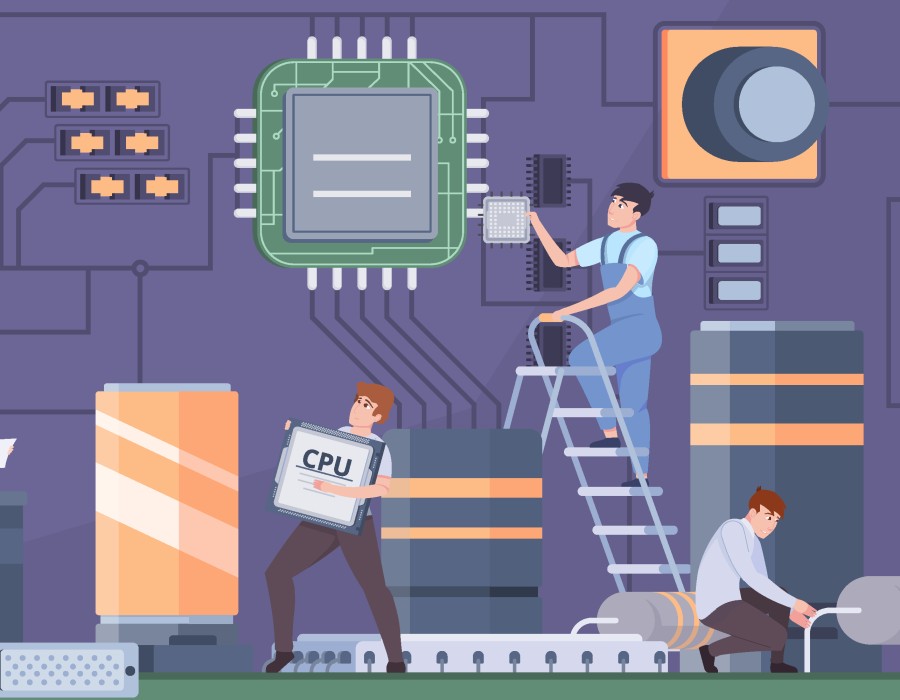However, electrical safety is a technical issue, but it also affects our homes, places of employment, and mental health. A sophisticated network of safety features intended to safeguard individuals and property is hidden behind each switch, outlet, and control panel. Circuit breakers are one of the most important parts of any power distribution system. These devices are crucial for ensuring safe electrical operation, whether they are air circuit breaker (ACB) protecting an industrial power system or miniature circuit breaker (MCB) installed in residential boards.
Lauritz Knudsen Electrical & Automation, a reputable brand in the smart electrical and automation solutions industry, is leading the way in this safety-first approach. In India and abroad, the brand is gradually coming to represent cutting-edge circuit protection.
The Importance of Circuit Breakers
Let's begin by explaining what a circuit breaker does. In its most basic form, a circuit breaker is a safety mechanism that, upon detecting a malfunction, such as an overload or a short circuit, automatically cuts off electrical power. By taking this step, the risk of electrical fires is decreased and possible damage to electrical devices is avoided.
However, circuit breakers differ from one another. Their breaking capacity, size, application, and reaction time all differ. The most popular varieties are Air Circuit Breakers (ACBs) for high voltage and industrial settings and Miniature Circuit Breakers (MCBs) for low current applications.
The Daily Hero: The Miniature Circuit Breaker (MCB)
Most likely, you have witnessed an MCB in operation in your house or place of business—those tiny switches that resemble toggles on your distribution board. MCBs are frequently utilized in light industrial, commercial, and residential settings because of their ability to manage lower current ratings, typically up to 100 amps.
The MCB's precision is what gives it such dependability. An MCB only requires a flick of the switch to reset, unlike a fuse that must be replaced after blowing. When it senses an unusual current flow, it trips immediately, preventing circuits from overheating or catching fire.
By fusing high-performance breaking capabilities with compact form factors, Lauritz Knudsen Electrical & Automation has improved the functionality and design of MCBs. Their modular MCBs are designed to be simple to install, resist frequent switching, reduce arc generation, and provide long-term operational safety.
Heavy-Duty Safety Is Powered by Air Circuit Breakers (ACB)
A more reliable solution is required for commercial complexes, industrial plants, and any other high-voltage setting. The air circuit breaker (ACB) can help with that.
ACBs are appropriate for large electrical installations because of their ability to interrupt high current levels, which are usually above 800 amps. To provide more accurate protection and monitoring, ACBs frequently employ electronic trip units, in contrast to MCBs, which are primarily thermal-magnetic.
An ACB's ability to isolate problematic network segments without affecting the system as a whole is one of its main advantages. In mission-critical operations like data centers or manufacturing lines, this guarantees both safety and continuity.
Lauritz Knudsen Electrical & Automation offers ACBs that combine cutting-edge digital protection with tough durability. These breakers, designed for harsh environments, are designed to function reliably even in the face of extreme operating conditions and fluctuating loads.
Why Choose Lauritz Knudsen Automation & Electrical?
There are several strong reasons why Lauritz Knudsen Electrical & Automation stands out in a crowded market. First of all, every product, from an industrial-grade ACB to a basic MCB, demonstrates their dedication to quality. Each part undergoes rigorous testing to ensure it satisfies international and national safety regulations.
Second, the brand concentrates on creating products that are both future-ready and easy to use. Lauritz Knudsen makes sure that their circuit breakers are simple to install and maintain, regardless of whether you're an engineer overseeing an industrial setup or an electrician wiring a house.
Last but not least, energy efficiency and sustainability are highly valued. The circuit breakers made by Lauritz Knudsen are intended to support digital power grids, smart factories, and green buildings as part of a broader movement toward smarter electrical infrastructure.
Common Questions
Q1. Simplified Circuit Breakers. Can an MCB be used in an industrial setting?
Because of their limited capacity to handle current, MCBs are typically not appropriate for high-power industrial systems. These types of settings are better suited for ACBs.
2. How long does a circuit breaker last?
Both MCBs and ACBs have a 10–15 year lifespan when used and maintained properly. Breakers from Lauritz Knudsen are designed to last longer than average.
Q3. How can I determine what kind of circuit breaker I require?
Assess the application type and load requirement first. Seek advice from a specialist or utilize online calculators offered by producers such as Lauritz Knudsen.
Q4. Do Lauritz Knudsen breakers work with panels that are already in place?
Indeed, the majority of their breakers are made to be modular and backward compatible.
Q5. Which safety certifications are attached to Lauritz Knudsen products?
Their circuit breakers are extensively tested for mechanical durability, fire resistance, and insulation quality, and they satisfy IEC standards.
Conclusions
Most of us don't consider electrical safety on a daily basis, but we ought to. Selecting the appropriate circuit protection can make all the difference, whether you're protecting a single appliance or an entire structure. The unsung heroes of modern electricity are devices like the air circuit breaker (ACB) and miniature circuit breaker (MCB), which silently prevent catastrophes in the background.
You can be confident that your systems are in capable hands because companies like Lauritz Knudsen Electrical & Automation are at the forefront of innovation and dependability. Because power is only one aspect of electricity; other factors include control, safety, and trust.





Comments